1. Losina E, Weinstein AM, Reichmann WM, Burbine SA, Solomon DH, Daigle ME, et al. 2013; Lifetime risk and age at diagnosis of symptomatic knee osteoarthritis in the US. Arthritis Care Res (Hoboken). 65:703–11. DOI:
10.1002/acr.21898. PMID:
23203864. PMCID:
PMC3886119.

2. Heidari B. 2011; Knee osteoarthritis prevalence, risk factors, pathogenesis and features: Part I. Caspian J Intern Med. 2:205–12. PMID:
24024017. PMCID:
PMC3766936.
3. Wallace IJ, Worthington S, Felson DT, Jurmain RD, Wren KT, Maijanen H, et al. 2017; Knee osteoarthritis has doubled in prevalence since the mid-20th century. Proc Natl Acad Sci U S A. 114:9332–6. DOI:
10.1073/pnas.1703856114. PMID:
28808025. PMCID:
PMC5584421.

4. Wluka AE, Lombard CB, Cicuttini FM. 2013; Tackling obesity in knee osteoarthritis. Nat Rev Rheumatol. 9:225–35. DOI:
10.1038/nrrheum.2012.224. PMID:
23247649.

6. Tran J, Peng PWH, Lam K, Baig E, Agur AMR, Gofeld M. 2018; Anatomical study of the innervation of anterior knee joint capsule: implication for image-guided intervention. Reg Anesth Pain Med. 43:407–14. DOI:
10.1097/AAP.0000000000000778. PMID:
29557887.
7. Fonkoué L, Behets C, Kouassi JK, Coyette M, Detrembleur C, Thienpont E, et al. 2019; Distribution of sensory nerves supplying the knee joint capsule and implications for genicular blockade and radiofrequency ablation: an anatomical study. Surg Radiol Anat. 41:1461–71. DOI:
10.1007/s00276-019-02291-y. PMID:
31338537.

8. Park MR, Kim D, Rhyu IJ, Yu JH, Hong J, Yoon S, et al. 2020; An anatomical neurovascular study for procedures targeting peri-articular nerves in patients with anterior knee pain. Knee. 27:1577–84. DOI:
10.1016/j.knee.2020.08.006. PMID:
33010776.

9. Kose SG, Kose HC, Celikel F, Akkaya OT. 2022; Predictive factors associated with successful response to utrasound guided genicular radiofrequency ablation. Korean J Pain. 35:447–57. DOI:
10.3344/kjp.2022.35.4.447. PMID:
36175344. PMCID:
PMC9530687.

10. Ilfeld BM, Gabriel RA, Trescot AM. 2017; Ultrasound-guided percutaneous cryoneurolysis providing postoperative analgesia lasting many weeks following a single administration: a replacement for continuous peripheral nerve blocks?: a case report. Korean J Anesthesiol. 70:567–70. DOI:
10.4097/kjae.2017.70.5.567. PMID:
29046778. PMCID:
PMC5645591. PMID:
1c783302a6b745fbab1d7c39bf5f86ff.

11. Sobel J, Oswald J. 2021; Novel use of 3-point genicular nerve block for acute knee pain in the emergency department. J Emerg Med. 61:416–9. DOI:
10.1016/j.jemermed.2021.04.012. PMID:
34176690.

12. Ghai B, Kumar M, Makkar JK, Goni V. 2022; Comparison of ultrasound guided pulsed radiofrequency of genicular nerve with local anesthetic and steroid block for management of osteoarthritis knee pain. Korean J Pain. 35:183–90. DOI:
10.3344/kjp.2022.35.2.183. PMID:
35354681. PMCID:
PMC8977196.

13. Roberts SL, Stout A, Dreyfuss P. 2020; Review of knee joint innervation: implications for diagnostic blocks and radiofrequency ablation. Pain Med. 21:922–38. DOI:
10.1093/pm/pnz189. PMID:
31407791.

14. Tran J, Peng PWH, Chan VWS, Agur AMR. 2021; Overview of innervation of knee joint. Phys Med Rehabil Clin N Am. 32:767–78. DOI:
10.1016/j.pmr.2021.05.011. PMID:
34593142.

15. Lee SH, Kim HJ, Kim SH, Cho TH, Kwon HJ, O J, et al. 2023; Anatomical study of the adductor canal: three-dimensional micro-computed tomography, histological, and immunofluorescence findings relevant to neural blockade. Korean J Anesthesiol. 76:252–60. DOI:
10.4097/kja.22499. PMID:
36245345. PMCID:
PMC10244601. PMID:
2879eaa2a0d8492db54a54c21bc2ab32.

17. Borgeat A, Blumenthal S, Karovic D, Delbos A, Vienne P. 2004; Clinical evaluation of a modified posterior anatomical approach to performing the popliteal block. Reg Anesth Pain Med. 29:290–6. DOI:
10.1097/00115550-200405000-00017. PMID:
15138916.

18. Tan YL, Neo EJR, Wee TC. 2022; Ultrasound-guided genicular nerve blockade with pharmacological agents for chronic knee osteoarthritis: a systematic review. Pain Physician. 25:E489–E502. PMID:
35793174.
19. Hirasawa Y, Okajima S, Ohta M, Tokioka T. 2000; Nerve distribution to the human knee joint: anatomical and immunohistochemical study. Int Orthop. 24:1–4. DOI:
10.1007/s002640050001. PMID:
10774852. PMCID:
PMC3619852.

20. Kennedy JC, Alexander IJ, Hayes KC. 1982; Nerve supply of the human knee and its functional importance. Am J Sports Med. 10:329–35. DOI:
10.1177/036354658201000601. PMID:
6897495.

21. Horner G, Dellon AL. 1994; Innervation of the human knee joint and implications for surgery. Clin Orthop Relat Res. 301:221–6. DOI:
10.1097/00003086-199404000-00034.

22. Franco CD, Buvanendran A, Petersohn JD, Menzies RD, Menzies LP. 2015; Innervation of the anterior capsule of the human knee: implications for radiofrequency ablation. Reg Anesth Pain Med. 40:363–8. DOI:
10.1097/AAP.0000000000000269. PMID:
26066383.
23. Erdem Y, Sir E. 2019; The efficacy of ultrasound-guided pulsed radiofrequency of genicular nerves in the treatment of chronic knee pain due to severe degenerative disease or previous total knee arthroplasty. Med Sci Monit. 25:1857–63. DOI:
10.12659/MSM.915359. PMID:
30858350. PMCID:
PMC6423735.

24. Lin CP, Chang KV, Wu WT, Özçakar L. 2020; Ultrasound-guided peripheral nerve stimulation for knee pain: a mini-review of the neuroanatomy and the evidence from clinical studies. Pain Med. 21(Suppl 1):S56–S63. DOI:
10.1093/pm/pnz318. PMID:
32804233.

25. Orduña Valls JM, Vallejo R, López Pais P, Soto E, Torres Rodríguez D, Cedeño DL, et al. 2017; Anatomic and ultrasonographic evaluation of the knee sensory innervation: a cadaveric study to determine anatomic targets in the treatment of chronic knee pain. Reg Anesth Pain Med. 42:90–8. DOI:
10.1097/AAP.0000000000000516. PMID:
27922951.
26. Elsaman AM, Maaty A, Hamed A. 2021; Genicular nerve block in rheumatoid arthritis: a randomized clinical trial. Clin Rheumatol. 40:4501–9. DOI:
10.1007/s10067-021-05821-5. PMID:
34213672.

27. Kim DH, Choi SS, Yoon SH, Lee SH, Seo DK, Lee IG, et al. 2018; Ultrasound-guided genicular nerve block for knee osteoarthritis: a double-blind, randomized controlled trial of local anesthetic alone or in combination with corticosteroid. Pain Physician. 21:41–52. DOI:
10.36076/ppj/2018.51. PMID:
29357330.
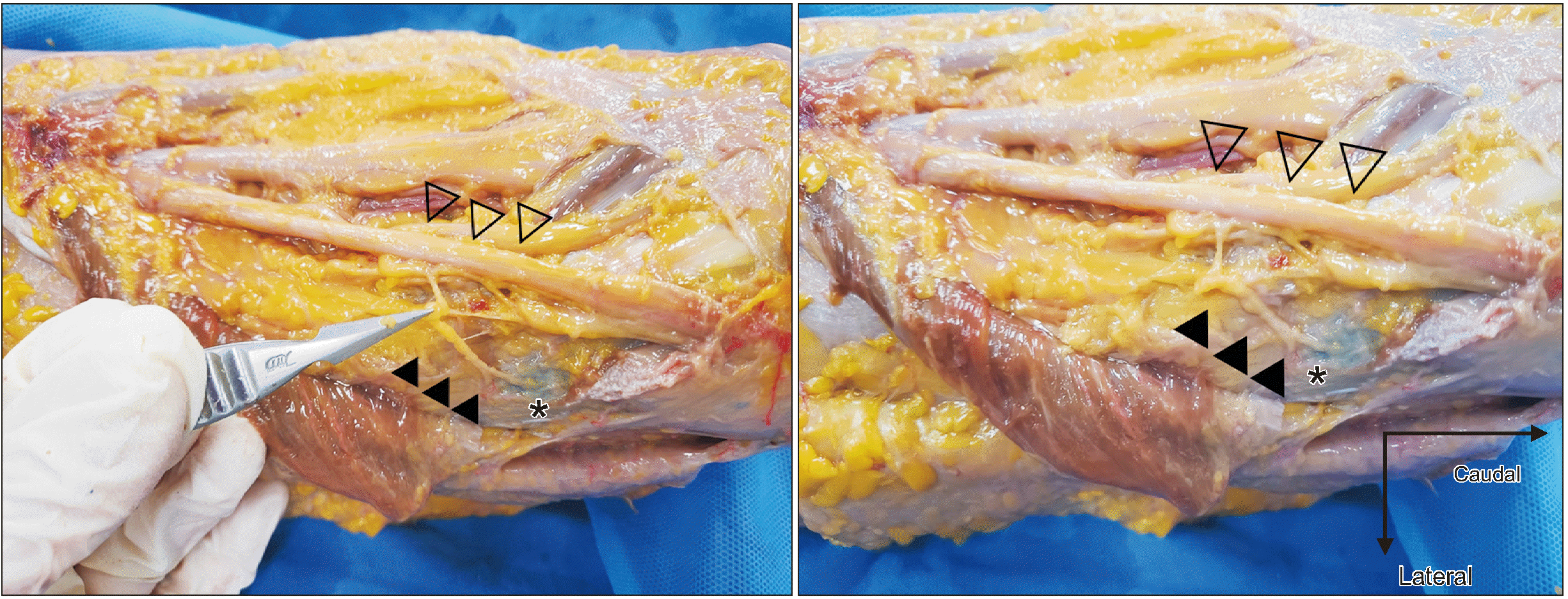
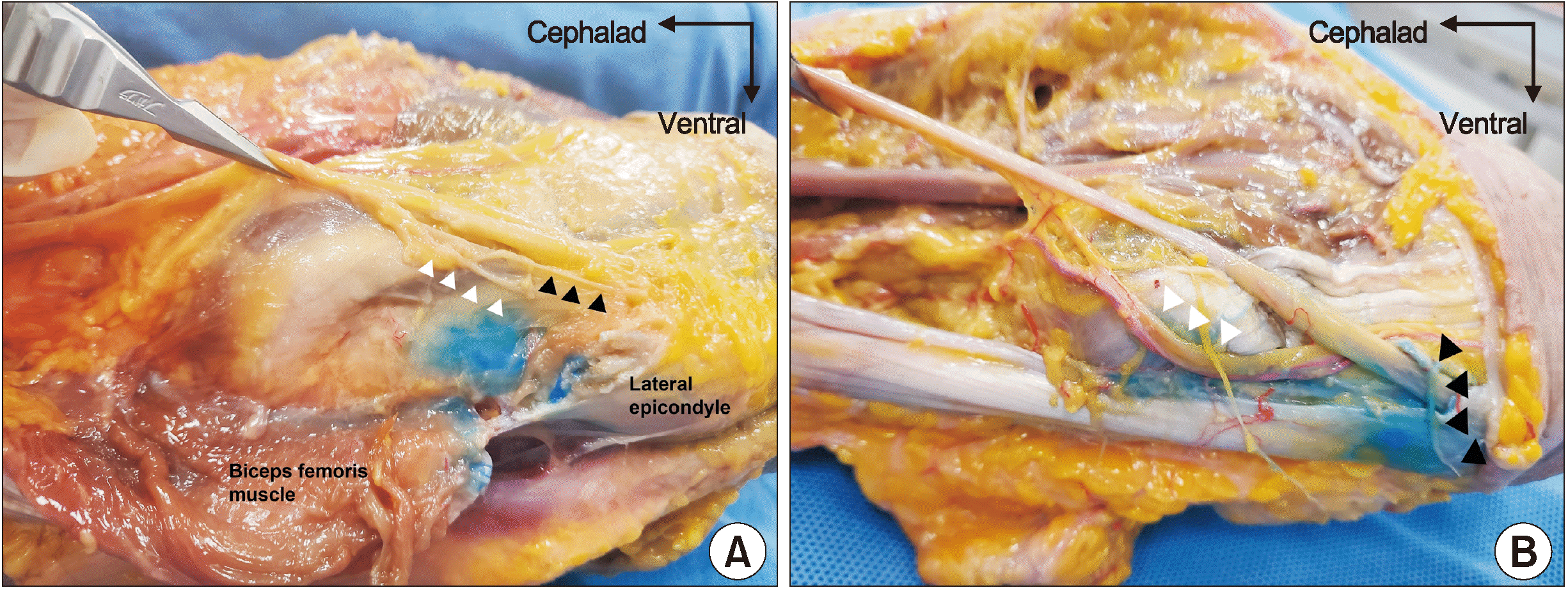




 PDF
PDF Citation
Citation Print
Print



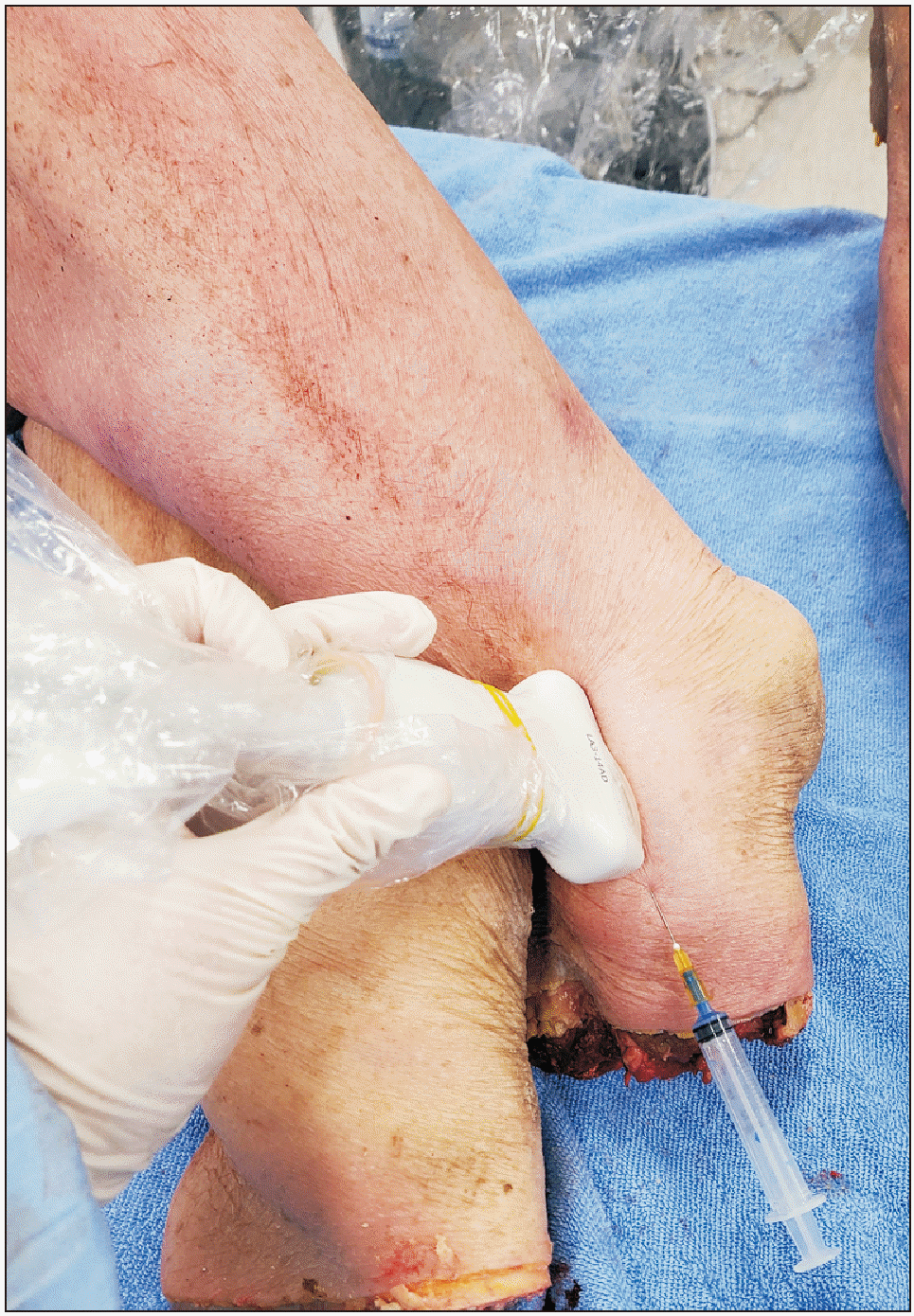
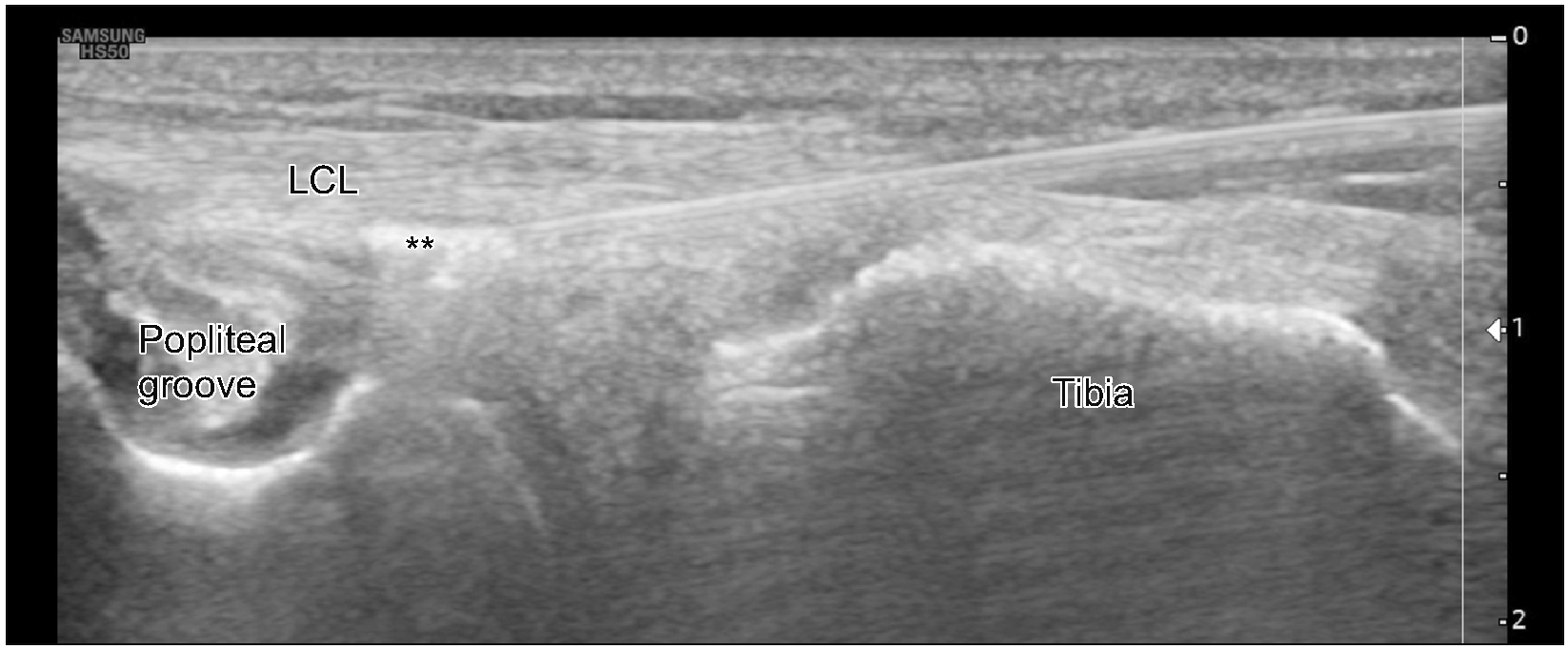
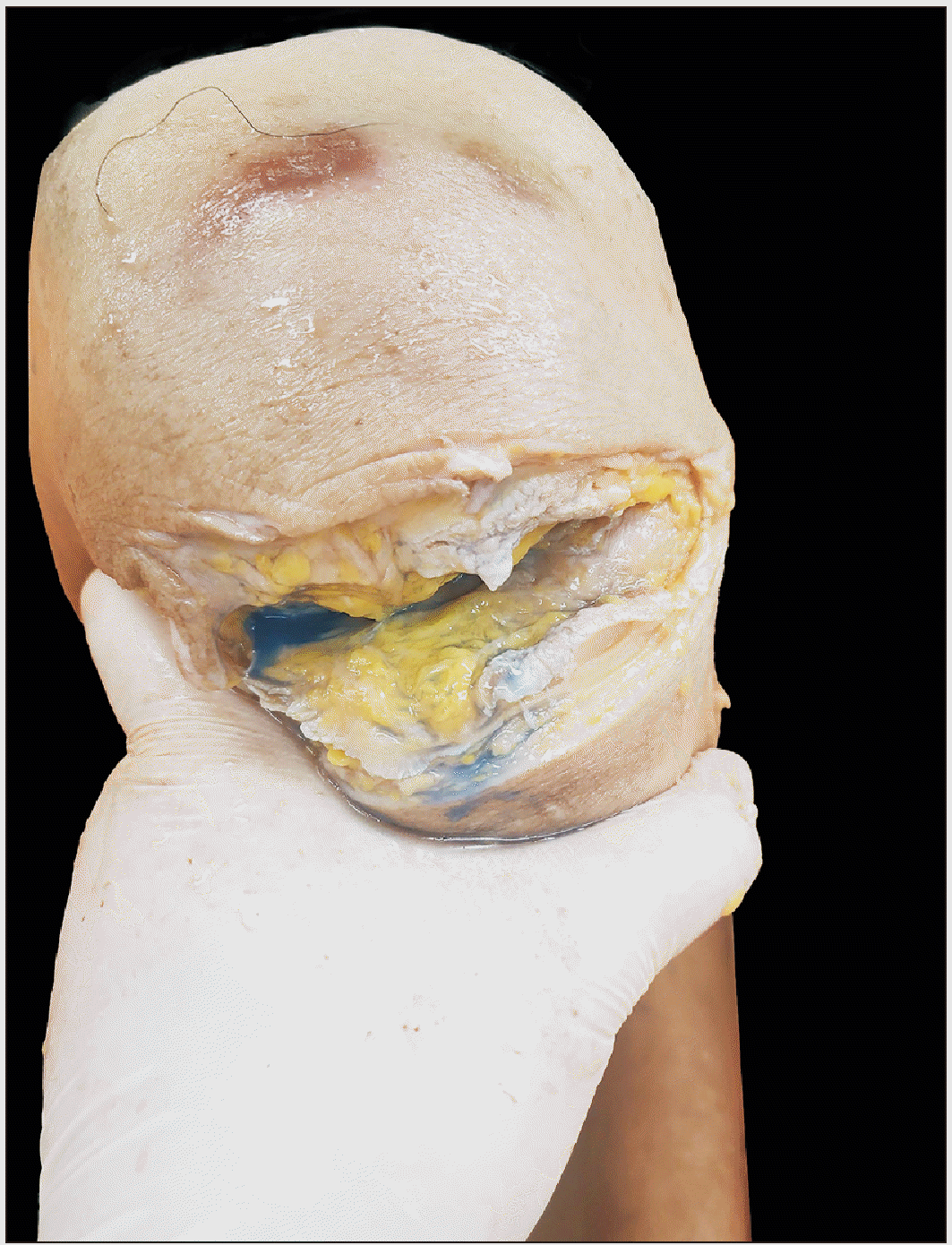
 XML Download
XML Download